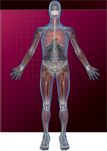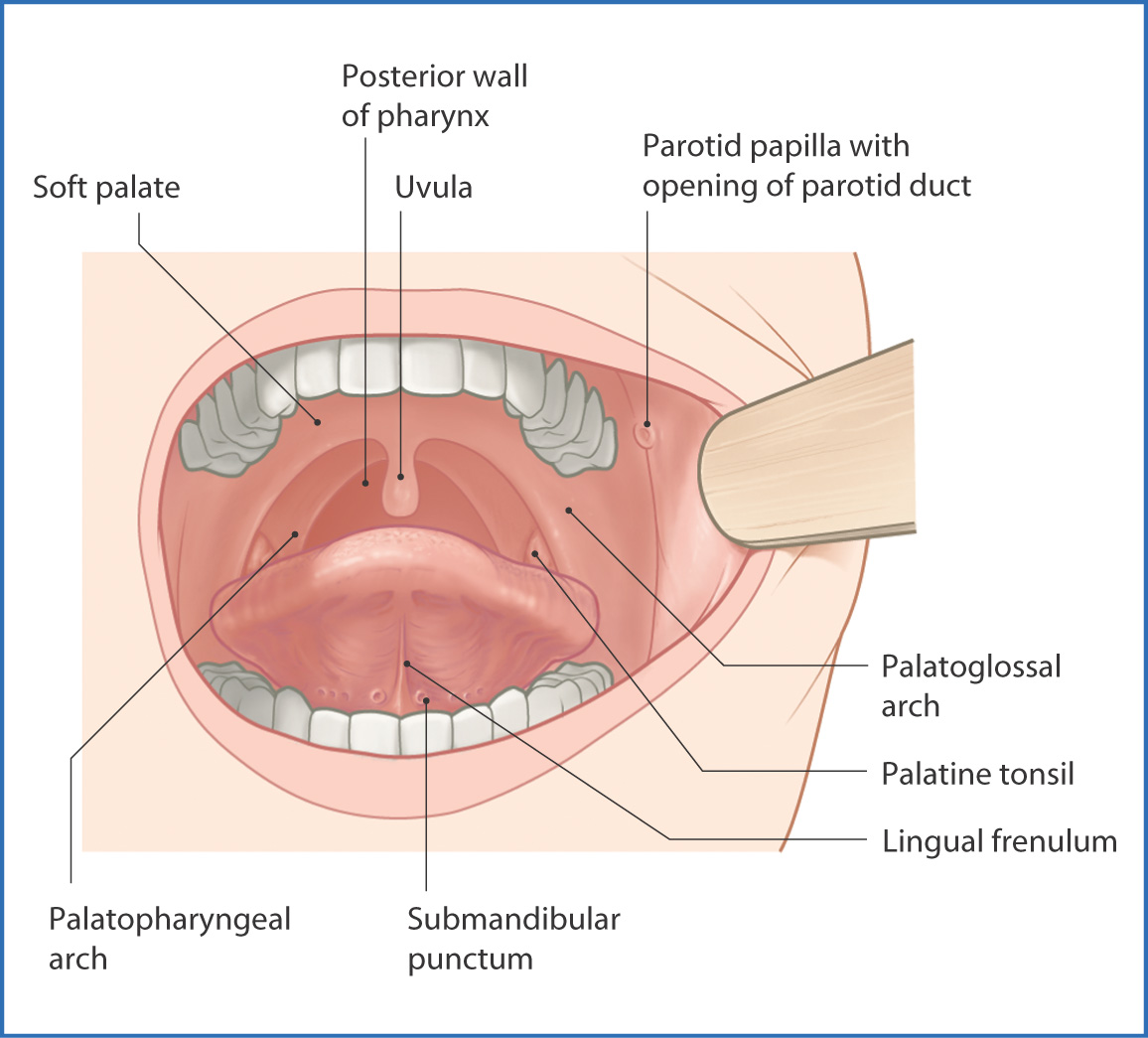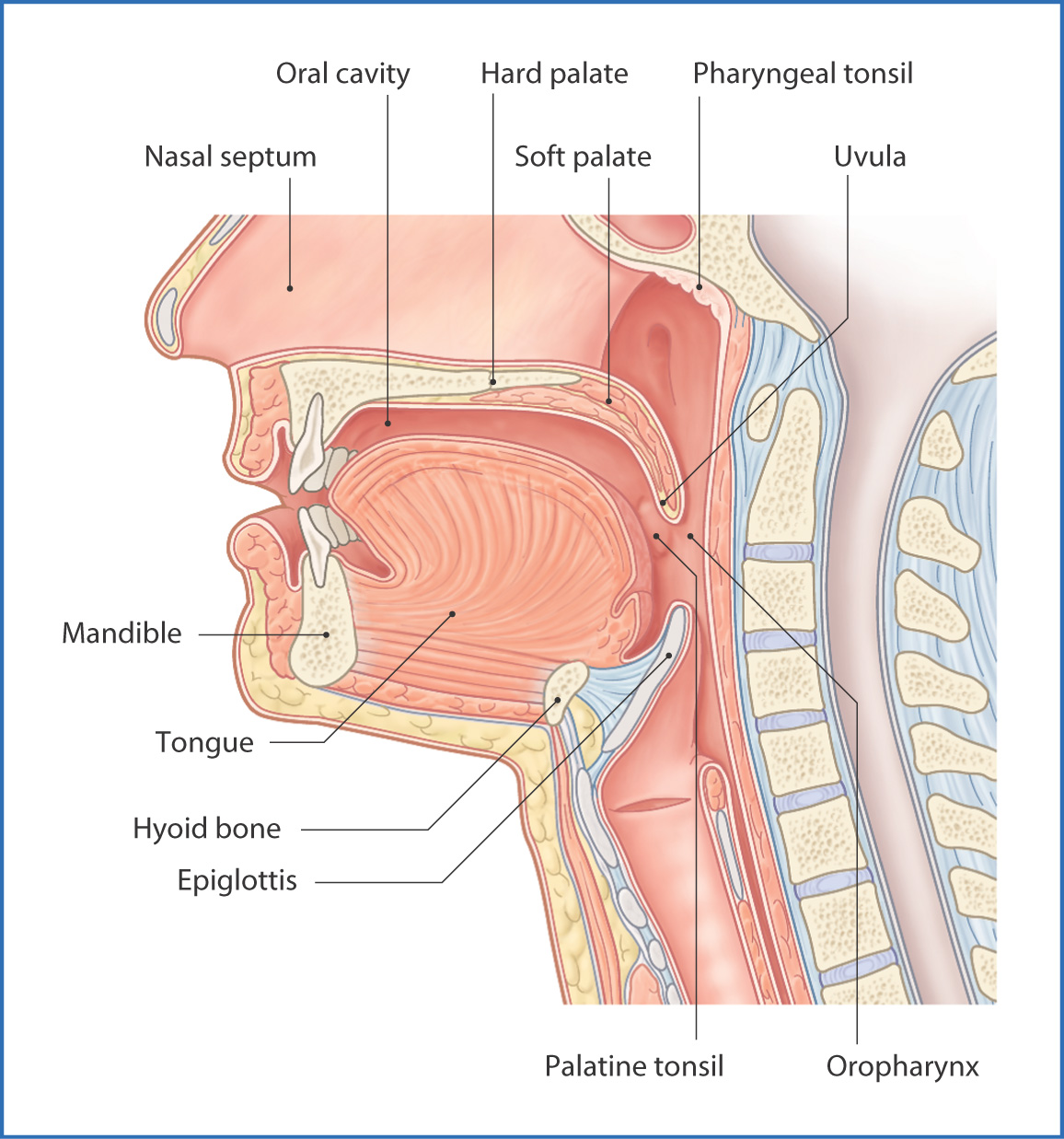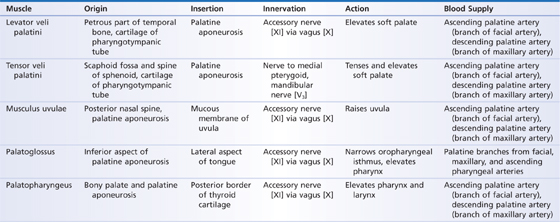
9
Oral Region
The digestive tract starts in the oral cavity (Figs. 9.1 and 9.2). It extends from the lips to the posterior oropharynx and is defined by the palate and cheeks, which form the roof and walls, respectively, and by the floor of the oral cavity. The oral cavity provides an entry point for food into the digestive tract and a conduit for respiration and speech.

FIGURE 9.1 Oral cavity—surface features.

FIGURE 9.2 Oral cavity—hemisected sagittal specimen.
Bony support of the oral region is provided by the mandible and bones of the viscerocranium (see Chapter 3). The hard palate—part of the roof of the oral cavity—is formed from the palatine processes of the maxillae and the horizontal plates of the palatine bones.
The soft palate is suspended from the posterior edge of the hard palate and moves posteriorly against the pharynx during swallowing to prevent material entering the nasal cavity. Anterior and lateral support of the oral region is provided by the maxillae and mandible. The floor of the oral region is occupied by the tongue, which is supported by the muscles of the submandibular region (see Chapter 11).
Muscles
The orbicularis oris and buccinator are muscles of facial expression, and they support the lips and cheeks, respectively. They have a secondary role in mastication. They are innervated by the facial nerve [VII] (see Chapter 4).
Five pairs of muscles support the soft palate and aid swallowing (Table 9.1). The tongue is a complex set of muscles, covered by mucous membrane, that rests on the floor of the oral cavity. It is attached to the hyoid bone and mandible and is supported by the geniohyoid and mylohyoid muscles. The muscles of the tongue are divided into extrinsic and intrinsic groups (Table 9.2).
TABLE 9.1 Muscles of the Soft Palate

TABLE 9.2 Muscles of the Tongue

Nerves
Developmentally, the maxilla and mandible are innervated by divisions of the trigeminal nerve [V]. The upper lip is innervated by labial branches of the infra-orbital nerve, from the maxillary nerve [V2] division, and the lower lip is innervated by the mental branch of the inferior alveolar nerve, from the mandibular nerve [V3] division. The hard and soft palates receive sensory innervation from the nasopalatine and greater and lesser palatine nerves, which are derived from the pterygopalatine portion of the maxillary nerve [V2]. The teeth of the upper jaw are innervated by the anterior, middle, and posterior superior alveolar branches of the maxillary nerve [V2]. The teeth of the lower jaw are innervated by the inferior alveolar nerve and incisive branches of the mandibular nerve [V3].
General sensation to the anterior two thirds of the tongue is provided by the lingual nerve, which is derived from the mandibular nerve [V3]; the glossopharyngeal nerve [IX
Stay updated, free articles. Join our Telegram channel

Full access? Get Clinical Tree


